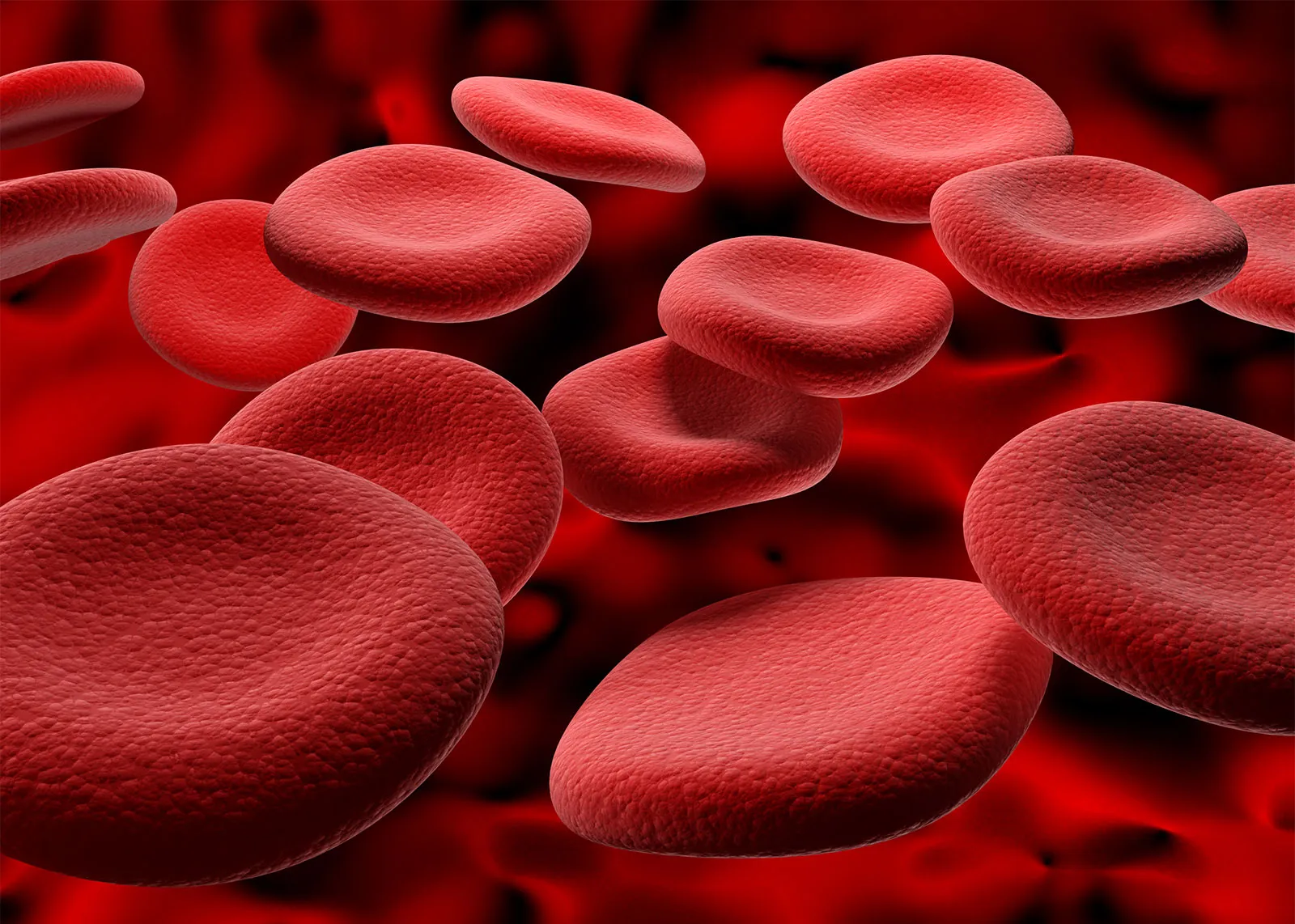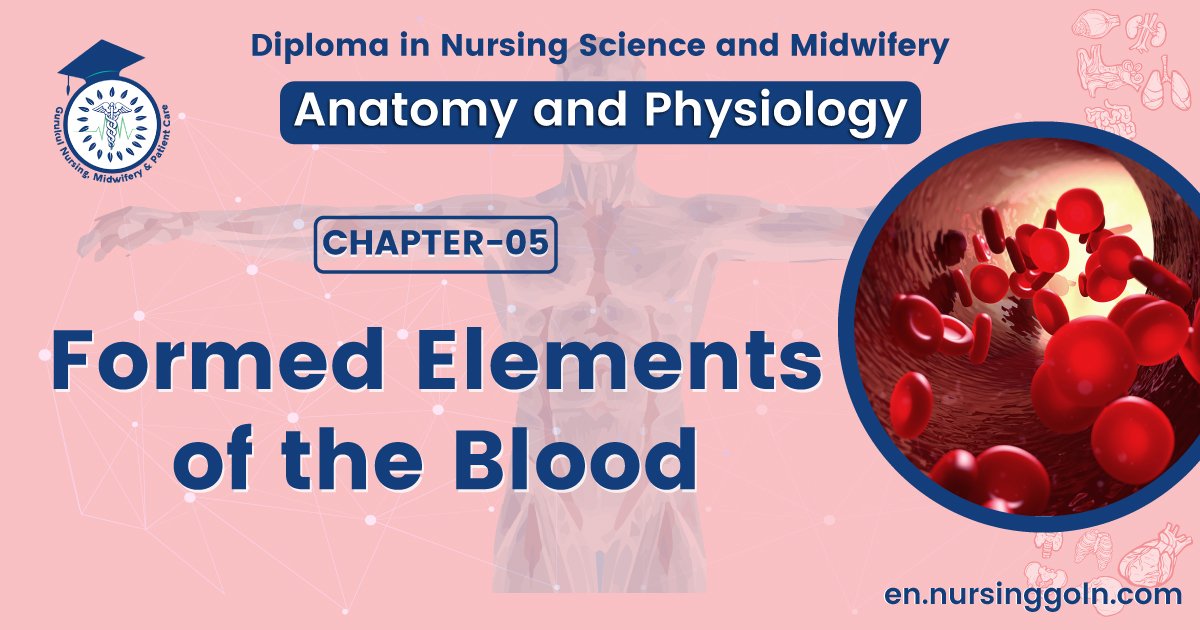Formed Elements of the Blood- The course is designed for the basic understanding of anatomical structures and physiological functions of human body, musculoskeletal system, digestive system, respiratory system; cardiovascular system; urinary system, endocrine system, reproductive system, nervous system, hematologic system, sensory organs, integumentary system, and immune system.The aim of the course is to acquire knowledge and skills regarding anatomy and physiology.

Formed Elements of the Blood
Formed Elements of the Blood
| Component | Description | Function |
| Erythrocyte (red blood cell) | Biconcave disc without nucleus, contains hemoglobin, survives 100 to 120 days | Transports oxygen and carbon dioxide |
| Leukocytes white blood cells) | Aid in defense against infections by microorganisms | |
| A. Granulocytes | About twice the size of red blood cells; cytoplasmic granules present, survive 12 hours to 3 days | |
| 1. Neutrophil | Nucleus with 2 to 5 lobes: cytoplasmic granules stain slightly pink | Phagocytic |
| 2. Eosinophil | Nucleus bi lobed, cytoplasmic granules stain red in cosin stain | Helps to detoxify foreign substances; secretes enzymes that dissolve clots, fights parasitic infections |
| 3. Basophil | Nucleus lobed, cytopla: mic granules stain blue in hematoxylin stain | Releases anticoagulant heparin |
| B. Agranulocytes | Cytoplasmic granules not visible; survive 100 to 300 days (some much longer) | |
| 1. Monocyte | 2 to 3 times larger than red blood cell; nuclear shape vanes from round to lobed | Phagocytic |
| 2. Lymphocyte | Only slightly larger than red blood cell, nucleus nearly fits cell | Provides specific immune response (including antibodies) |
| Platelet (thrombocyte) | Cytoplasmic fragment, survives 5 to 9 days | Enables clotting, releases serotonin. which causes vasoconstriction |
WBC:-
White blood cells (WBC), or leukocytes are important components of our blood system. The scientific name ‘leukocyte’ is derived from the Greek origin, leuko- denotes ‘white” and cyte meaning ‘cell’, ‘white blood cell’ reflects the physical appearance of blood sample after centrifugation as shown below in Fig.5.3 & 5.4.
They are made in the bone marrow and very crucial for us to have a good health and protecting the body against infection and disease, this can be from germs, viruses, or other external substances that the body sees as threat.
White blood cells are endlessly produced in the bone marrow and kept ready within the blood and lymphatic systems until they are needed. Leukocytes are much less than red blood cells and account for about 1% of the cells in blood.
Figure 5.3 various types of WBC (Granular Leukocytes:-neutrophil has small granules that stain light lilac and a nucleus with two to five lobes. An eosinophil’s granules are slightly larger and stain reddish-orange, and its nucleus has two to three lobes. A basophil has large granules that stain dark blue to purple and a two-lobed nucleus).
Types/Classification of WBC:

Neutrophils: ate the miks thrmitant typ leukocytes (40 75%) and the most abundant type of statte wives The functia fiunt infection by ingesting microorganism and releasing enzymes that kil
Eosinophils are one type granulocytes, account for less than 7% of white blood cells. Their function is attack and kill parasites, destroy cancer cells, and they are part of allergic responses.
Basophils: are created in response to inflammation and infection like other leukocytes, comprising a rall percentage of the total white blood cells circulating in the blood (0.4% 1%). They secrete hemicals such as histamine, a marker of allergic disease which can induce inflammation in response to an allergen Basophils also excrete heparin that is used to prevent blood from clotting too quickly.
Monocytes are a larger than other leukocytes but only account for 2% 8% of the total white blood cells in cuculation. They are responsible for attacking and breaking down germs or bacteria that enter a person s body.
When they are needed, monocytes travel to other organs, such as the spleen, liver, lungs, and bone marrow, where they transform into a cell called a macrophage. A macrophage is responsible for many cellular tunctions, including removing dead or damaged tissue, destroying cancer cells, and regulating the immune response.
Lymphocytes: are the major component of our body’s adaptive immune response and usually account for approximately 20-40% of the total white blood cells. They act by identifying foreign objects, like bacteria and viruses, and generating a specific response that is made for the invader. Lymphocytes have three major types T cells, B cells, and Natural Killer cells.
Differential count of WBC:
| Cells | Approximately range/ml (Absolute count) | Percentage of Total count (Differential count) |
| 1. Neutrophil | 3000-6000 | 50-70 |
| 2 Eosinophil | 150-300 | 1-4 |
| 3. Basophil | 0-100 | 0.4 |
| 4. Lymphocyte | 1500-4000 | 20-40 |
| 5. Monocyte | 300-600 | 2-8 |
N.B: Leukocytes, better known as white blood cells, take on different forms that perform different roles in the immune system. These include:
- Neutrophils are the first responder of immune cells
- Basophils release histamine to mount a non-specific immune response
- Eosinophils fight bacteria and parasites but also provoke allergy symptoms
- Lymphocytes are B and T cells that defend against specific invaders
- Monocytes clean up dead cells
- Leukocytosis increase in the number of white cells. WBC count over 11,000 per cubic millimeter
- Leukopenia decrease in the number of white cells.

Blood cells:
i. Erythrocyte (RBC).
ii. Leukocyte (WBC).
iii. Thrombocyte (platelets)
Site of development:
A. Intrauterine life:
- Mesoderm of yolk sac: From 3rd week to 3rd month.
- Liver and spleen: From 3rd month to 5th month.
- Red bone marrow: From 5th month to birth.
B.After birth:Also from red bone marrow.
C.Adult: From the red bone marrow of the flat bones, upper end of the humerous and tibia, Vertebrae etc.
(Ref: Guyton 12 ed, P-414)
Read more:
